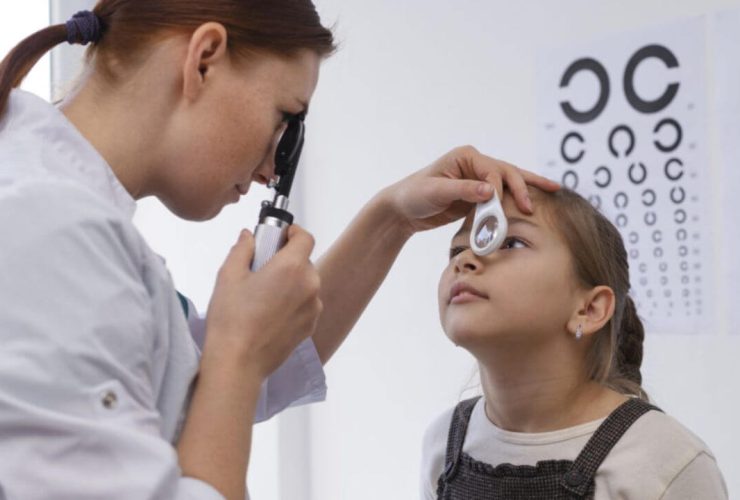How Do Optometrists Detect Early Signs of Chronic Illnesses?
When the great majority of people think of optometrists, they think of vision correction and eye care, but they are experts in chronic illness detection using comprehensive eye exams. An eye examination goes far beyond simply assessing vision, it can also highlight early signs of chronic diseases. These signs of chronic conditions can go unnoticed in regular medical visits, but can be assessed in certain changes in the eye. In this article we will explore how optometrists are part of the systemic disease detection process, and most importantly, why seeing your optometrist regularly is important to not only your vision but also your long term health.
Understanding Chronic Illness Detection Through the Eyes
The eyes are commonly referred to as a window into our general health. The retina provides a unique view of small blood vessels and nerves in the body, putting optometrists in an ideal position to identify early warning signs of systemic, chronic disease in the vascular or nervous system.
Optometrist chronic illness detection takes clinical experience and cutting-edge technology to identify small changes in your eyes that may present as a risk to chronic disease. The optometrist can recognise a disease like diabetes, hypertension or multiple sclerosis, before the patient may experience any other clinical signs in the body.
How Do Optometrists Detect Chronic Illnesses?
An optometrist’s chronic illness detection tests go far beyond the basic vision acuity tests you take each year. A complete eye examination will evaluate the different areas of the eye structures, which may have some benefit for your overall health.
- Retinal Examination: The retina contains the smallest blood vessels in the body. Optometrists are looking for changes to those blood vessels (like bleeding, swelling, or narrowing), and indications of chronic illnesses are correlated with important changes to those blood vessels.
- Optical Coherence Tomography (OCT): The OCT creates ultra- high resolution images of the layers of retina. It helps optometrists identify the smallest changes indicating diseases like diabetic retinopathy, or glaucoma related to chronic illnesses.
- Pupil Dilation: When drops are put into your eyes, the drops will dilate the pupils. This helps the optometrist look at finer details and also to look for early diseases and complications of disease, such as inflammation and changes to the optic nerve, which may indicate neurological disease.
- Colour and Visual Field Testing: Colour and visual field testing is typically done to check the health of the vision nerves in your eyes and assess your experience of your vision. These could also indicate neurological disease, such as multiple sclerosis or stroke.
With these tests, optometrist chronic illness detection shows not only diseases specific to the eye, but also chronic conditions that affect other areas of the body.
The Crucial Role of Eye Exams in Diabetes Detection
Diabetes is also commonly diagnosed during an eye exam. The eye can actually show some of the earliest visible signs of diabetes-related complications prior to a diagnosis or symptoms being seen elsewhere. An eye exam for diabetes plays a vital role here.
A significant aspect of the diabetic examination is the assessment for diabetic retinopathy, which occurs when the retinal blood vessels have damage as a result of prolonged elevated blood sugars. It can result in loss of vision if it goes undetected, but it is easily treated with early detection. For the optometrist chronic illness detection of diabetic patient, they generally assess:
- Retinal Imaging: Using new digital photography to obtain detailed views of retinal blood vessels.
- OCT Scans: Evaluation for swelling or fluid in the retina.
- Fluorescein Angiography (if indicated): Checking for leaking blood vessels with critical treatment needs.
Detecting Other Chronic Conditions Through Eye Care
Diabetes detection is often well-known, but optometrists also discover many other chronic conditions, including:
- Hypertension: Chronic high blood pressure can cause structural changes to the retinal vessels: either narrowing of the vessels, or in more serious cases bleeding may occur that can only be detected at a professional eye examination.
- Cholesterol: Sometimes cholesterol deposits under the cornea or arteries that surround the retina can be seen and noted during a complete eye exam.
- Autoimmune Diseases: There are some autoimmune diseases that cause eye inflammation that the optometrist can diagnose even before there are noticeable signs or symptoms in the body.
- Neurological disease: An optometrist can assess the optic nerve for changes that may be consistent with a disease process like glaucoma, multiple sclerosis or brain tumours.
Make Your Eye Health a Priority Today
Early eye exams are an important part of effective chronic illness management. To help ensure your long-term well-being and to help it make sense of your eye health, contact Carlton & Stanley Opticians and book a comprehensive eye exam. Carlton & Stanley Opticians use the highest-quality diagnostic technology and techniques for optometrist chronic illness detection. identifying the underlying signs even before a person presents them, or observes any disruption to their vision or health.
Protect your vision and your health. Book your comprehensive eye exam with Carlton & Stanley Opticians today!




